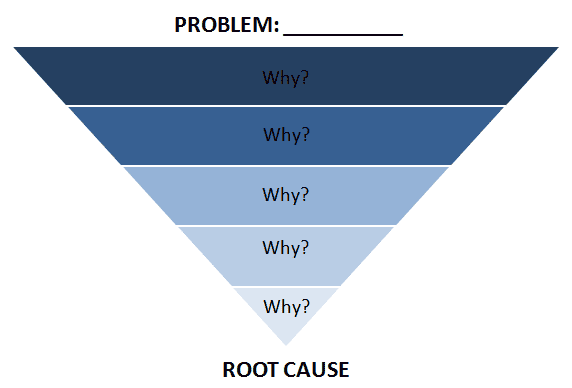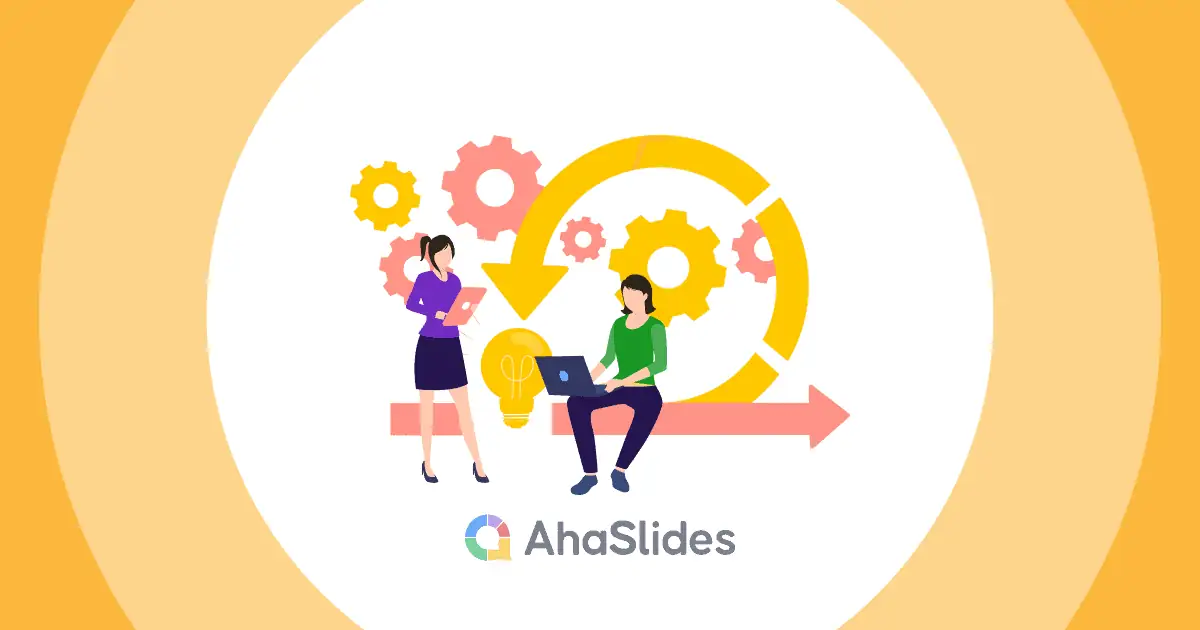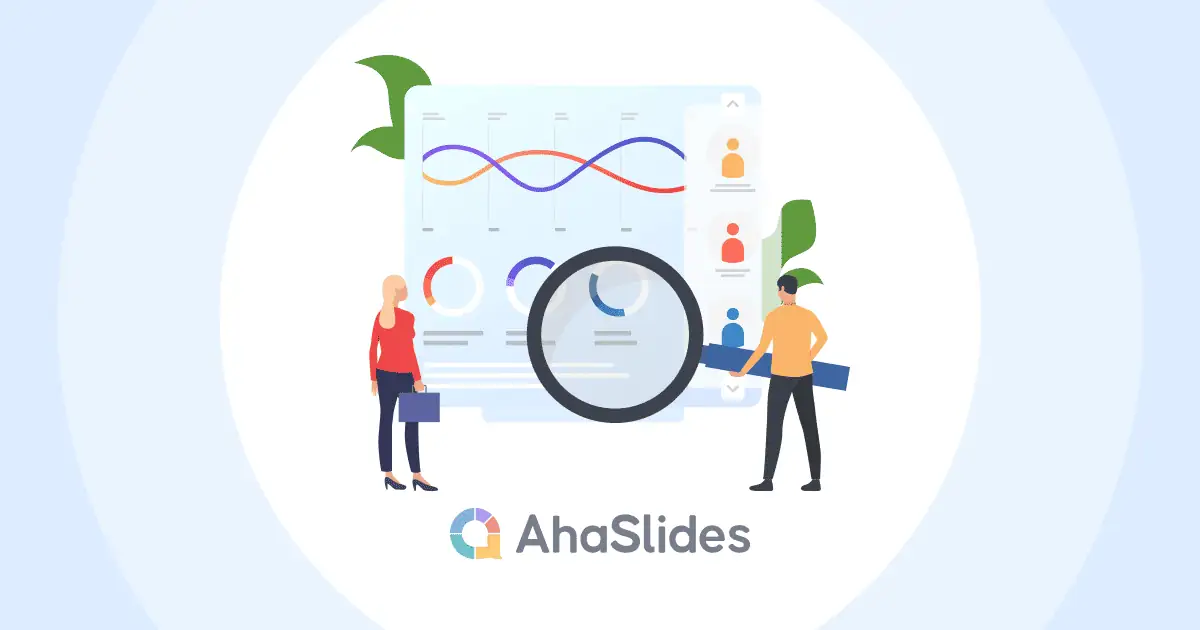如果您的團隊正在處理一個持續存在的問題,而您厭倦了不斷地處理,那麼也許是時候深入挖掘並找到根本原因了。這時,「五個為什麼」方法就派上用場了。在這篇文章中,我們將探討如何透過問五個「為什麼」來簡化組織的複雜性。
目錄
什麼是五個為什麼方法?

「五個為什麼」方法是一種深入研究組織問題根源的解決問題技巧。它需要問五個“為什麼”,層層剝開問題,揭示其根本原因。
這種方法也稱為 5 Why 或 5 Why 方法,它超越了表面解決方案,促進了對問題的徹底分析。 五個為什麼方法通常用於解決問題和決策過程,可幫助組織進行 five-why 分析,確定挑戰的真正根源,以實施更有效和可持續的解決方案。
五個為什麼方法的好處
「五個為什麼」方法具有多種優勢,使其成為尋求有效解決問題和根本原因分析的組織的寶貴方法。 以下是「5 個為什麼」方法的一些主要優點:
1/ 深層原因識別:
「五個為什麼」方法擅長揭示問題背後的根本原因。透過反覆詢問“為什麼”,它迫使企業進行徹底的檢查,幫助企業透過表面現象識別核心問題。
2/ 簡單性和可訪問性:
「五個為什麼」方法的簡單性使其可供組織內各個層級的團隊使用。 不需要專門的培訓或複雜的工具,使其成為解決問題的實用且簡單的方法。
3/ 性價比:
與其他解決問題的技術相比,實施「五個為什麼」方法具有成本效益。 它需要最少的資源,並且可以在基本便利的情況下進行,使其成為預算有限的組織的有效選擇。
4/ 增強溝通:
多次詢問「為什麼」可以促進團隊內部的開放溝通。它促進了協作和對問題的共同理解,從而創造出更透明、溝通更順暢的工作環境。
5/ 預防復發:
透過解決問題的根本原因,「五個為什麼」方法可以幫助組織發展出防止問題再次發生的解決方案。 這種積極主動的方法有助於長期解決問題並提高整體組織效率。
五個為什麼方法或根本原因分析的 5 個為什麼方法因其簡單性、成本效益和識別根深蒂固問題的能力而脫穎而出,使其成為致力於持續改進和解決問題的組織的寶貴工具。

如何應用五個為什麼方法
以下是如何應用「五個為什麼」方法的逐步指南:
1/ 確定問題:
首先明確定義您要解決的問題。 確保問題是具體的並且每個相關人員都能很好地理解。
2/ 提出第一個「為什麼」的問題:
詢問為什麼會出現問題。 鼓勵團隊成員提供探索問題直接原因的回應。 這將啟動調查過程。
3/ 對每個答案重複:
對於最初「為什麼」問題的每一個答案,都要再問一次。重複重複這個過程,通常要問五遍,或直到你找到答案並找到根本原因。關鍵在於不要只停留在表面的解釋。
4/分析根本原因:
一旦你問了五次“為什麼”,或者找到了引起團隊共鳴的根本原因,就要分析它,確保它確實是根本問題。有時,可能需要進行額外的調查或驗證。
5/ 制定解決方案:
確定根本原因後,集思廣益並實施直接解決問題的解決方案。 這些解決方案應旨在消除或減輕根本原因,並防止問題再次發生。
6/ 監控和評估:
讓我們將解決方案付諸行動,並密切關注其後續影響。評估問題是否已解決,以及是否需要對解決方案進行任何調整。

五個為什麼的例子
讓我們透過一個簡單的例子來說明「五個為什麼」方法是如何運作的。想像一下,你的行銷團隊面臨一個問題:網站流量下降
問題陳述:網站流量減少
1.為什麼網站流量下降了?
- 答:跳出率明顯上升。
2.為什麼跳出率增加了?
- 答:訪客發現網站內容不相關。
3. 為什麼訪客發現內容不相關?
- 答:內容與目標受眾的當前需求和偏好不符。
4. 為什麼內容不符合觀眾的需求和喜好?
- 答:行銷團隊沒有進行最近的市場調查來了解不斷變化的客戶偏好。
5.為什麼行銷團隊最近沒有進行市場調查?
- 答:有限的資源和時間限制阻礙了團隊進行定期市場研究的能力。
根本原因: 網站流量下降的根本原因是有限的資源和時間限制阻礙了行銷團隊進行定期的市場調查。
解決方案: 分配專門的資源進行定期市場研究,以確保內容符合目標受眾不斷變化的需求和偏好。
在這個行銷範例中:
- 最初的問題是網站流量減少。
- 透過詢問五次“為什麼”,團隊找到了根本原因:有限的資源和時間限制阻礙了定期的市場研究。
- 該解決方案涉及透過專門為定期市場研究分配資源來解決根本原因,以便更好地使內容與受眾偏好保持一致。
成功應用「五個為什麼」方法的技巧
- 讓跨職能團隊參與: 聚集來自不同部門或職能的個人,以獲得對問題的不同觀點。
- 鼓勵開放式溝通: 為團隊成員創造一個安全的空間來分享他們的見解,而不必擔心受到指責。 強調過程的協作性質。
- 記錄過程: 記錄五個為什麼分析,包括提出的問題和提供的答案。 該文件對於將來的參考和學習很有價值。
- 根據需要進行調整: 靈活運用「五個為什麼」。如果團隊在問五個「為什麼」之前就找到了根本原因,就沒必要再追問其他問題了。

關鍵要點
在解決問題的過程中,「五個為什麼」方法如同燈塔,指引組織直擊挑戰的核心。透過反覆詢問“為什麼”,團隊能夠撥開層層表象,發現亟待關注的根本原因。
為了加強「五個為什麼」方法的應用,使用 啊哈幻燈片。這種互動式簡報工具可以簡化流程的協作方面,使團隊能夠共同剖析問題並為尋找解決方案的旅程做出無縫貢獻。 AhaSlides 促進了即時互動,使「五個為什麼」分析成為團隊的一種動態且引人入勝的體驗。
常見問題
什麼是「5個為什麼」技術?
「五個為什麼」方法是一種深入研究組織問題根源的解決問題技巧。它需要問五個“為什麼”,層層剝開問題,揭示其根本原因。
5個為什麼的理論是什麼?
五個為什麼理論是基於這樣的理念:透過反覆詢問“為什麼”,人們可以發現更深層的因果關係,超越表面症狀,找出問題的根本原因。
什麼是「5個為什麼」教學策略?
5個為什麼教學策略是將5個為什麼方法當作教育工具。它透過提出一系列「為什麼」的問題來幫助學生分析問題,從而了解問題的根本原因。








